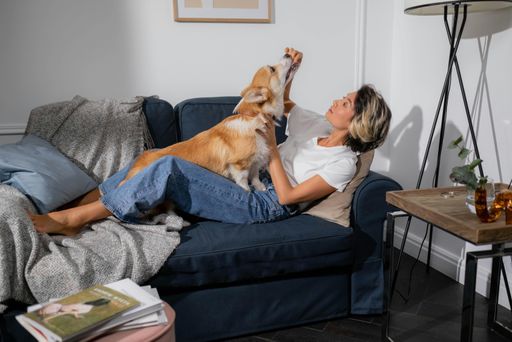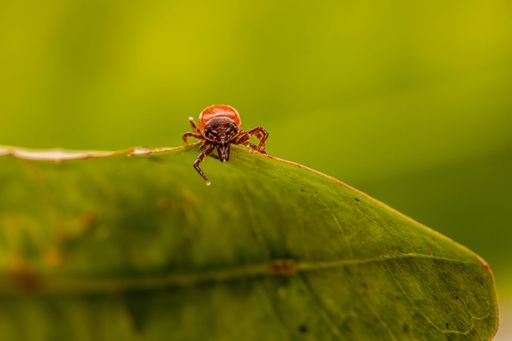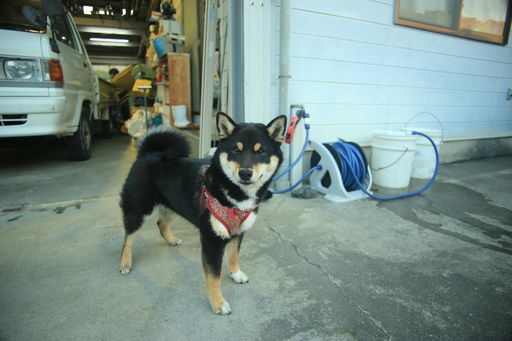If you decide to create a playspace for your dog, you need to do so while keeping safety in mind. That means preparing for changes in the weather, staying cautious of the chemicals you spray and the allergens in the air, building a strong fence, and more. Here are some key safety steps to consider so you can be confident that your dog is safe while playing in the yard.
Safe Play Structures
Dogs need a chance to run and stretch their legs. You may not always have the chance to take your dog to the park, so set up a space in the yard where they can run and play at will. In addition to making your dog happy, this is also part of being a good neighbor. Keeping your dog occupied helps ensure that they aren’t being excessively loud or causing a disturbance.
Provide plenty of things to play with in their outdoor space so your pet can entertain itself without you there. Offer a variety of toys, from squeaky noise-makers to chew toys. Dogs love to find different ways to navigate their surroundings, so put out boxes and large plastic containers they can play around with at their leisure.
It’s also fun to create safe play structures for endless entertainment. You can build your own structure or combine miscellaneous parts, like big tires, ropes, and buckets. For safety, make sure to cover the ground with safe surface materials. Concrete and asphalt is dangerous because it can get too hot. A dog’s resting temperature is between 99 to 102.5 degrees Fahrenheit. Hot asphalt can increase a dog’s temperature and lead to stress or heat exhaustion. Instead, try gravel or artificial turf that won’t overheat. Consider also placing lights outside so your pup can still see what they’re doing at night.
Complete your building project by surrounding the entire yard with a sturdy fence so your dog can’t escape. Make it deep enough into the ground so that your pup can’t escape underneath. If you can’t build, consider installing an invisible fence.
Plan For The Weather
Depending on where you live, you’ll likely need to take precautions when the weather turns hot and cold. Prepare for warmer temperatures by having at least one space where your pet can go for shade and to cool down when necessary. That can be anything from an overhead awning to a dog house. It’s also essential to set up a designated food and water area.
Hydration is especially important. Try to set up an automatic hydration system that automatically fills their bowl with water. You can also make water part of their outdoor fun. Have the sprinkler system turn on periodically throughout the day so your dog can stay cool, jump around, and have a blast. Keep an eye on your dog and watch for signs of heatstroke, including lethargy or increased panting.
Caution is also necessary during the colder months, especially if your dog has short hair. Check the temperature before letting the pup outside for long periods of time. If it’s safe to do so, you may consider heat lamps. Another idea is to provide dog booties for warmth.
Whether it’s hot or cold outside, you can give your dog some control over their safety by installing a pet door. That way, your dog can come in if it’s too hot or cold outside, and you don’t have to worry so much.
Be Cautious Of Toxins, Dangerous Plants, And Allergens
When it comes to the outdoor safety of your dog, a lot of attention must be paid to the plants, allergens, and toxins in the area. You can eliminate a lot of threats by having an eco-friendly lawn. Many chemicals are not only bad for the environment and the ingredients in traditional lawn care products have also been found to cause cancer. Plus, a lawn that’s infused with natural fertilizers may also be more resilient against weeds.
To truly help yourself and the planet, try to avoid chemicals as often as possible, especially those that may be harmful to animals. For instance, many fertilizers contain iron, which is dangerous when ingested in large amounts. Watch for pesticides that contain organophosphates, which are highly toxic. Instead, use natural fertilizers such as grass clippings, manure, or compost. Adding native plants will attract pollinators that will do a lot of the heavy lifting for you.
Be cautious of possible allergens in the area. Many dogs are allergic to pollen, often found in flowers, grasses, and weeds, as well as fleas that are often found in shrubs. Research the plants before you add anything new. If you notice your dog excessively sneezing, coughing, or itching, treat your dog’s allergies. Many over-the-counter remedies, like Zyrtec and Benadryl, can help. As can regularly bathing and rubbing your dog’s paws. If it continues, see the vet.
Conclusion
There are many ways to create a fun outdoor space that your dog will adore, but you must also be sure it’s safe. You know your dog better than anyone, so plan the area for your pet’s strengths and weaknesses, and you’ll create the perfect getaway.


















